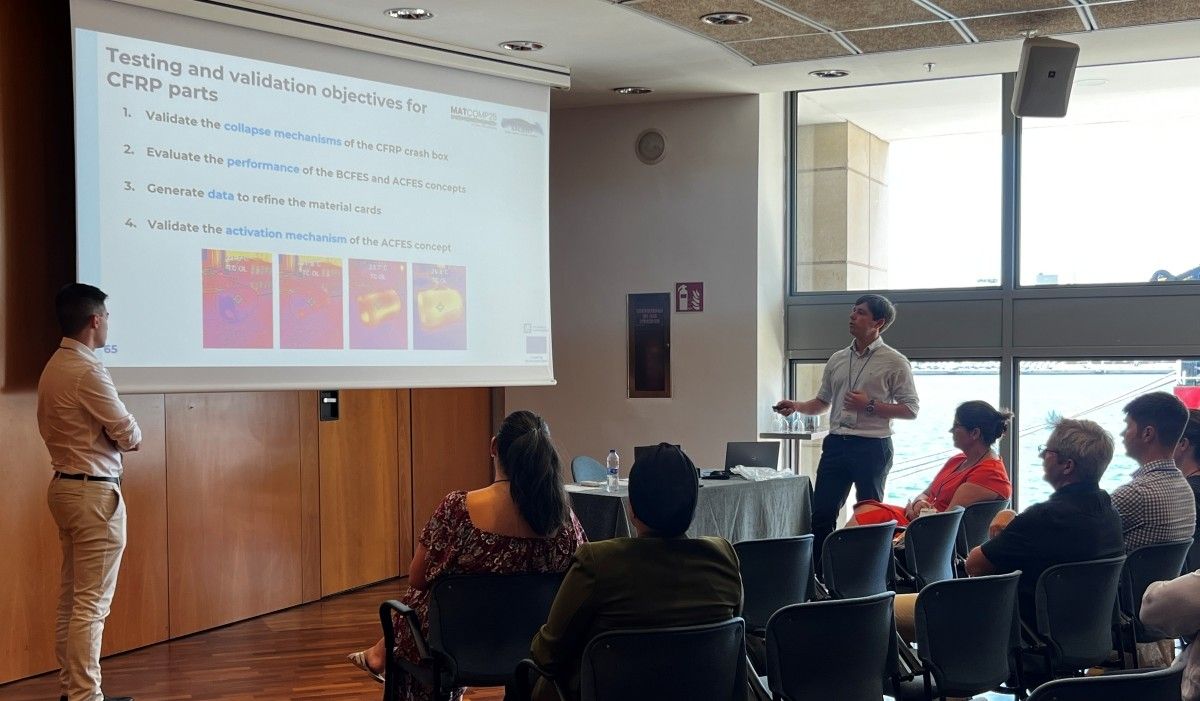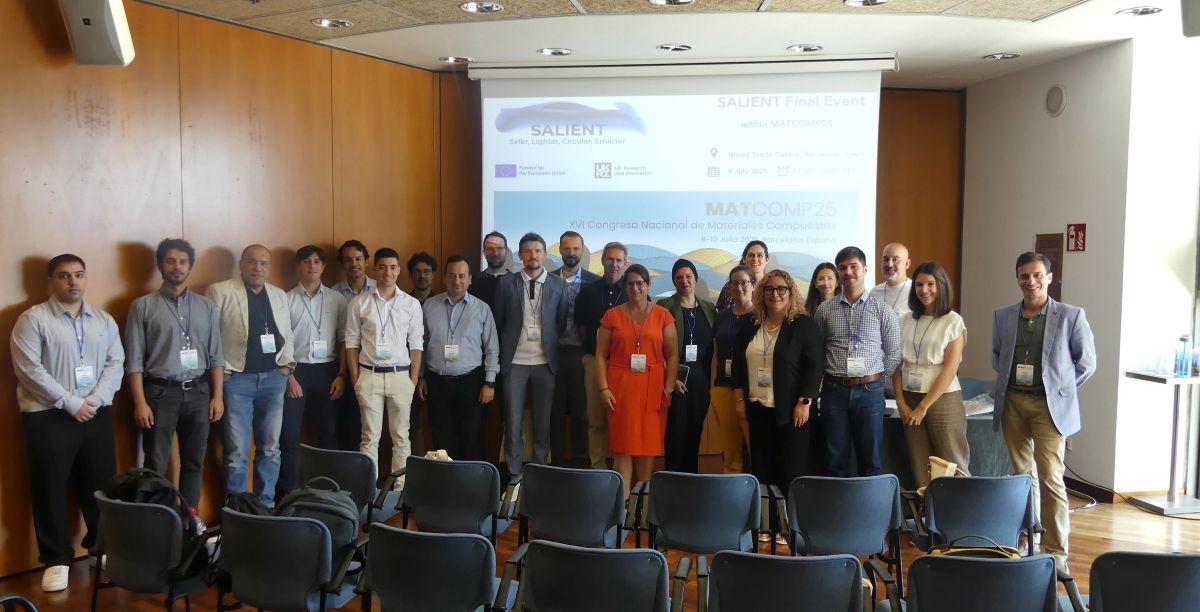Last 8 July 2025, the Final Event of the SALIENT project was celebrated within the framework of the MATCOMP Conference, which was held at the World Trade Centre in Barcelona, Spain. During a special session, the main outcomes achieved, and lessons learned during the project were presented to over 45 attendants. A front-end structure prototype was showcased in the exhibition area.
During the session, the following presentations were made by the project partners:
- Welcome & Opening Remarks: Raquel Ledo, Head of the Product Innovation and Materials Department at CTAG
- Keynote speech: Katerina Deliali, Project Officer at CINEA
- From vision to crash test: integrating next-gen materials and composites into the automotive industry: Ahmed Elmarakbi, Professor at UNN
- Developing a next-gen crashbox for the automotive of tomorrow: developing and integrating composite materials in real-world industry applications: Patryk Nossol, Scientist at Fraunhofer IWU & Sebastian Iwan, Managing Director at ThermoPre
- Realising full vehicle validation in simulation environments: Karlheinz Kunter, Lead Researcher at Virtual Vehicle GmbH
- (Crash) testing requirements for novel composite materials – paving the route for future standards and requirements: Jorge Velasco Manrique, Project Engineer at CIDAUT & Victor Garcia Santamaria, R&D Project Engineer at IDIADA Applus+
- Closing Remarks: Raquel Ledo, Head of the Product Innovation and Materials Department at CTAG
The presentation made jointly by CIDAUT and IDIADA focused on the physical testing of the components and full prototype structures developed during the project. The crash behaviour of the composite crash boxes was comprehensively explained, highlighting how the adaptive concept manufactured by embedding Shape Memory Alloy wires within the composite laminate can help to enhance the performance of the component. The energy absorption mechanisms of the full front-end structure were also described, and it was explained how the structure behaves under frontal crash scenarios against rigid wall and deformable barrier, and how each component contributes to the overall crashworthiness performance of the structure. Overall, the physical tests allowed the validation of the developments made, demonstrating that adaptive structural features enhance safety under real-life conditions.

You can check and download the proceedings and pictures from the Final Event in the following link: https://www.salient-project.eu/proceedings
